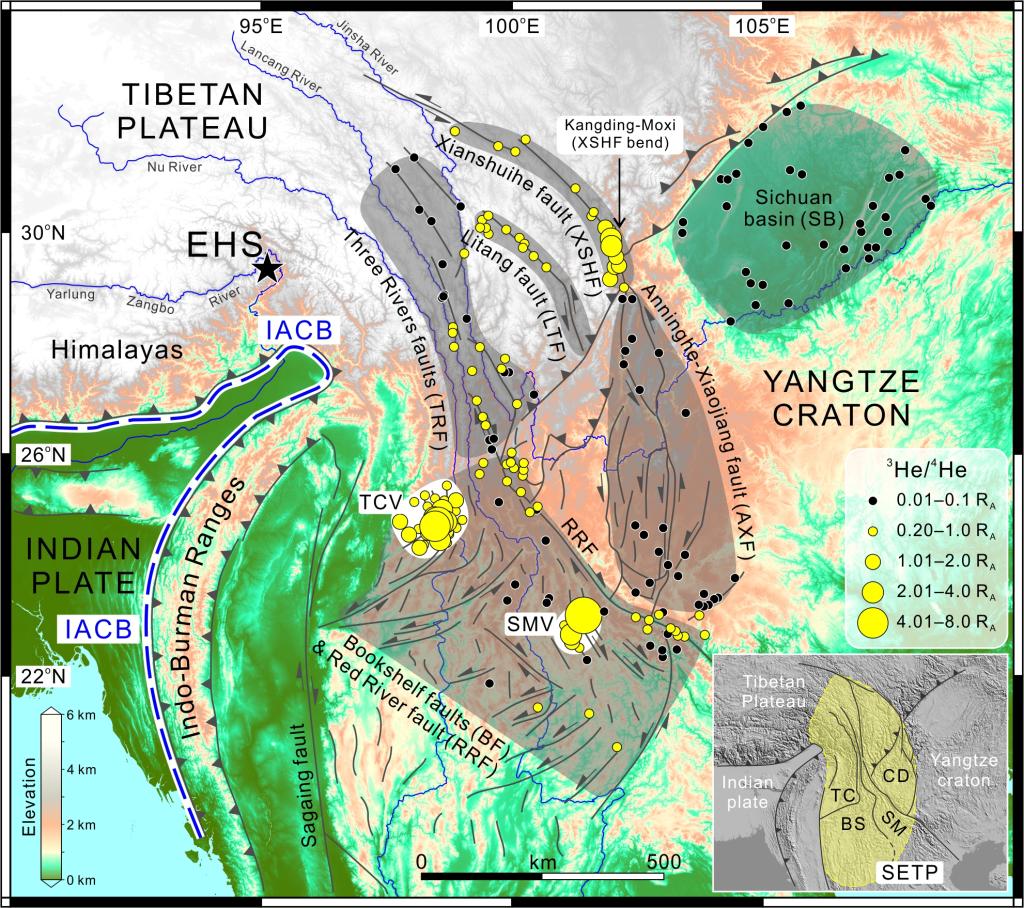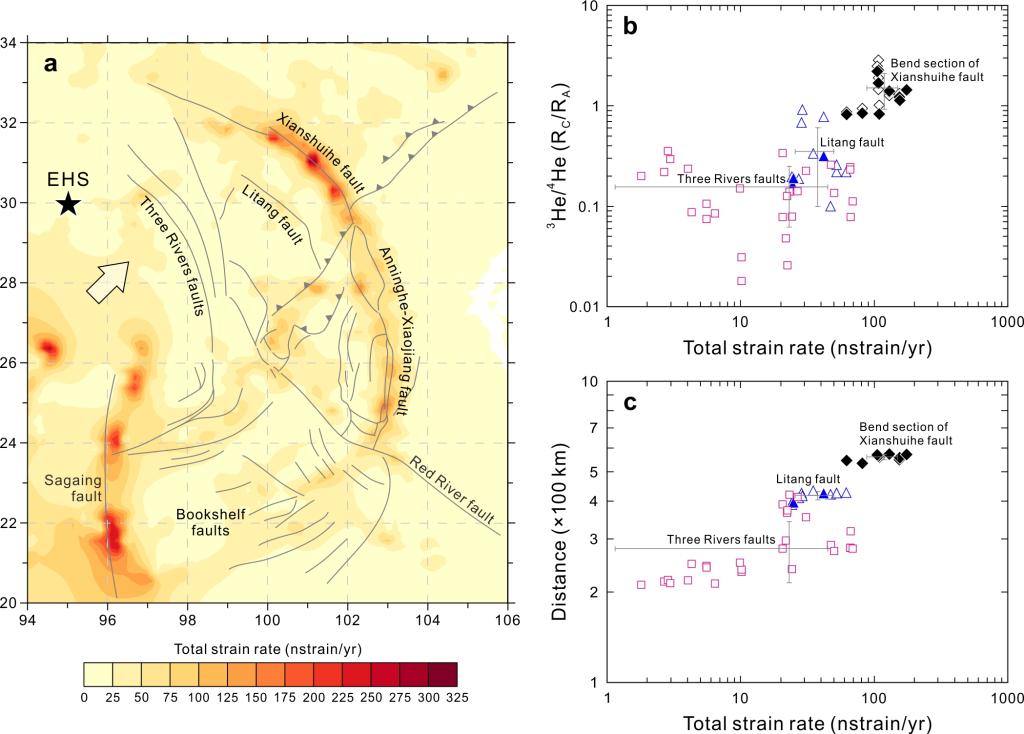How the Tibetan Plateau, known as the Earth’s third pole, attained its present-day elevation and size has attracted much attention from Earth scientists for decades. Two contrasting models are now leading the debate that focuses on the depths of geodynamic processes involved in the southeastward growth of the Tibetan Plateau over geological timescales. One model suggests lithospheric extrusion occurring possibly at a mantle scale, while the other argues for plateau growth driven by crustal flows. No answer arose, and the debate continues till now.
A research group led by Prof. XU Sheng from School of Earth System Science, Tianjin University, showed that the depths of plateau growth dynamics can be constrained unambiguously by geochemistry of deeply-sourced volatiles (e.g., He, CO2, and N2) from active fault zones and Quaternary volcanoes. The research results have been published in Nature Communications on July 6th.

Fig. 1 Simplified map showing tectonic framework and distribution of air-corrected 3He/4He values for fluid samples.
Using He-CO2-N2 data of hydrothermal fluid samples, the researchers identified unambiguous mantle contributions to the fluids discharging from major active faults and Quaternary volcanoes in southeastern Tibetan Plateau (SETP; Fig. 1). This reveals the existence of a lithospheric-scale strike-slip fault system in the SETP, which strongly suggests the involvement of mantle dynamics in southeastward growth of the Tibetan Plateau.

Fig. 2 Comparison between 3He/4He distribution and geodetic strain rate field along the direction of Indian indentation into Asia.
The group also presented a “snapshot” of regional stress field based on deeply-sourced He degassing pattern of the SETP (Fig. 2). The excellent correlation between 3He/4He values and strain rates, along the strike of Indian indentation into Asia, suggests non-uniform distribution of stresses between the plateau boundary and interior, which are suggested to have modulated the southeastward growth of the Tibetan Plateau within the context of India-Asia convergence.
The researchers successfully bridged the gap between geochemistry of deeply-sourced volatiles and geodynamic processes involved in southeastward growth of the Tibetan Plateau, providing a new perspective for the understanding of plateau growth dynamics. They demonstrated that evidence from volatile geochemistry can shed light on the deep dynamic processes that contributed to the shaping of Earth’s surface over geological timescales.
This study was completed under the joint efforts of Prof. LIU Cong-Qiang, Prof. LI Si-Liang, and Prof. LANG Yun-Chao from Tianjin University, Prof. GUO Zhengfu and Prof. ZHENG Guodong from Chinese Academy of Sciences, Prof. LI Ying from China Earthquake Administration, Prof. Peter BARRY from Woods Hole Oceanographic Institution, Prof. Yuji SANO from the University of Tokyo, and other authors from Tianjin Chengjian University, Sun Yat-sen University, Chinese Academy of Sciences, and University of Iceland, etc.
Link to the article: https://www.nature.com/articles/s41467-021-24415-y